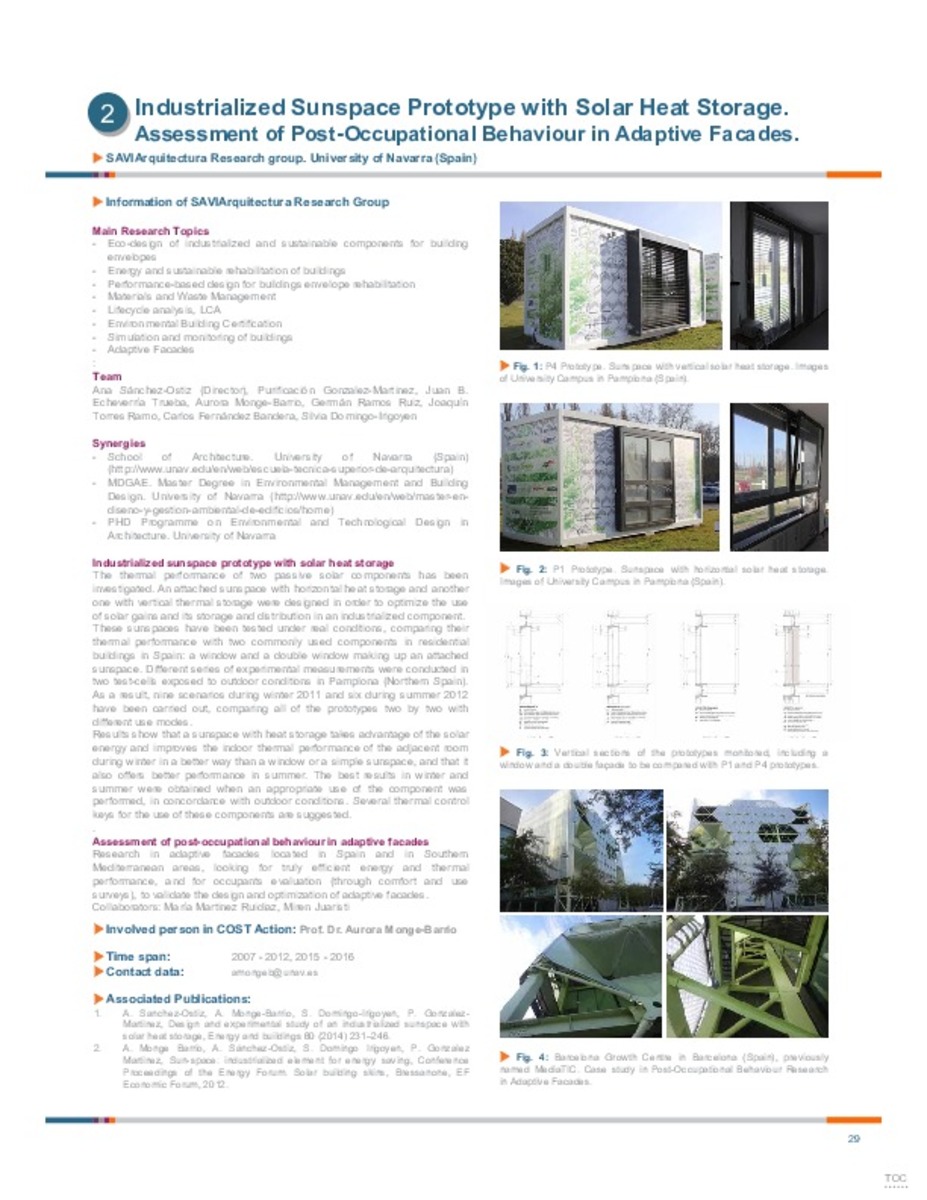Industrialized Sunspace Prototype with Solar Heat Storage. Assessment of Post-Occupational Behaviour in Adaptive Facades.
Keywords:
Adaptive Facades
Simulation and monitoring of buildings
Environmental Building Certification
Lifecycle analysis, LCA
Materias Investigacion::Arquitectura
Note:
Based upon work from COST Action TU 1403 adaptive facade network, supported by COST
(European Cooperation in Science and Technology).
COST (European Cooperation in Science and Technology) is a pan-European intergovernmental framework. Its mission is to
enable break-through scientific and technological developments leading to new concepts and products and thereby contribute
to strengthening Europe’s research and innovation capacities.
Citation:
Sánchez Ostiz A.; Gonzalez Martinez,P.Echeverría Trueba, J.B.; Monge Barrio, A.; Ramos Ruiz, G.; Torres Ramo, J.; Fernández Bandera, C.; Domingo Irigoyen, S. Industrialized Sunspace Prototype with Solar Heat Storage. Assessment of Post-Occupational Behaviour in Adaptive Facades. En: (VV.AA.) ""Adaptive facade network – Europe"". Delf: TU Delft Open, 2015.
Statistics and impact
0 citas en

0 citas en

Items in Dadun are protected by copyright, with all rights reserved, unless otherwise indicated.










